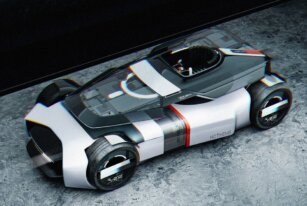What’s your take on the Apollo 11 lunar landing? It remains a controversial topic to this day as many believe the National Aeronautics and Space Administration (NASA) sent humans to the moon. Meanwhile, some firmly believe everything is fake and the footage was all a choreographed act shot in a film studio. Despite the kooky conspiracy theories, here are some fascinating updates about the next Lunar Terrain Vehicle (LTV).
For years, people with a strong interest in the exploration of the cosmos wondered why we never went back to Earth’s only natural satellite. There were countless missions launched after the last manned mission to the lunar surface by Apollo 17. NASA claims these were to better understand other planets and extraterrestrial bodies in our solar system.
It seems space agencies across the globe have set their sights on the moon once more. According to reports, the American space agency recently awarded three companies with contracts to develop a new Lunar Terrain Vehicle. These groups are Lunar Outpost, Intuitive Machines, and Venturi Astrolab. So far, details about the latter two are still under wraps.
However, we’re pumped to learn that MDA Space, Goodyear, Lockheed Martin, and General Motors are counted as part of the Lunar Dawn team headed by Lunar Outpost. A prototype is yet to be built but renders of the Lunar Terrain Vehicle paints a clear picture of what they have envisioned. Images show what looks like a futuristic pickup truck.
According to press materials, the cargo bed is modular to accommodate items of various sizes. A robot arm is likewise integrated to do all the heavy lifting. Given the extreme conditions the Lunar Terrain Vehicle will be exposed to, it should be durable enough to withstand drastic temperature fluctuations and traverse the difficult terrain.
Finally, autonomous driving capabilities are a must-have on the Lunar Terrain Vehickle as well. Lockheed Martin vice president of Lunar Exploration Campaigns Kirk Shireman stated, “these unique technologies will enable the future of critical infrastructure required for a sustainable presence in space where humans can live, and work far from Earth.”
Learn MoreImages courtesy of Lockheed Martin/Kevin Adams/Lunar Dawn







